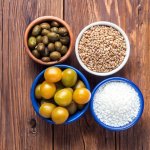Santorini fava is one of the most classic dishes that you will find on the island, it is practically served at a every Santorini restaurant but you can make it very easily at home. This is how you do it! The recipe is copy/pasted from this link https://greekcitytimes.com/2022/03/08/santorini-fava-recipe-greece/
All you will need to do is boil the beans and blend them in a food processor or mash by hand. The ingredients are very simple!
– 500 x grams yellow split peas
– 2 x onions, chopped
– 1/3 x litre olive oil, extra for drizzling
– salt and pepper to taste
All you will need to do is boil the beans and blend them in a food processor or mash by hand. The ingredients are very simple!
– 500 x grams yellow split peas
– 2 x onions, chopped
– 1/3 x litre olive oil, extra for drizzling
– salt and pepper to taste



